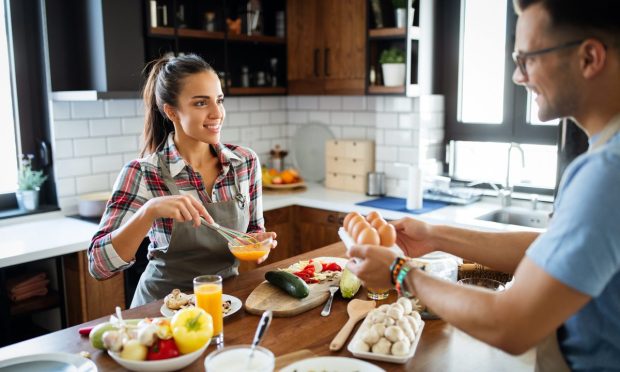Consumers Trade Restaurant Meals for Upscale Brands at Home

As food prices rise, many consumers are eating at home more often, offering premium consumer packaged goods (CPG) brands the chance to attract new customers. Even as many shoppers trade down, opting for less expensive grocery products, premium CPG brands somewhat counterintuitively have a unique opportunity to woo cost-conscious consumers.
Daniel Doll, CEO of direct-to-consumer (D2C) condiment brand Bushwick Kitchen, noted in an interview with PYMNTS that, as consumers cut back on dining out, many are more open than usual to springing for higher-quality sauces and syrups.
“One of the side effects of something moving towards a recession is that people go out to eat less, and so, in a way, it’s helped us a little bit.” Doll said, “People will buy that sauce that’s maybe a little bit pricier, because buying a sauce and upgrading their food at home is far less expensive than going out for that meal.”
Indeed, the data supports that consumers are eating at home more. Research from PYMNTS’ study “Consumer Inflation Sentiment: Inflation Slowly Ebbs, but Consumer Outlook Remains Gloomy,” which drew from an August survey of 2,169 consumers, found that 78% expect to eat at home more often to save money, up slightly from the 77% that said the same the month prior.
Read more: New Survey Shows Consumers Less Optimistic Than Fed on Taming Inflation
Let Me Entertain You
Many of these diners are also looking to upgrade their purchases for friends and family. Doll explained that, as consumers seek out more affordable meal alternatives, they are more likely to spend social occasions hosting company at home than meeting at a restaurant, opting for higher-end foods for their guests than they might choose if they were dining alone.
That said, when consumers shop for themselves, many are trading down rather than stepping it up. The same Consumer Inflation Sentiment Study found that 62% of grocery shoppers have cut down on nonessential spending, 48% have switched to cheaper merchants, and 37% have reduced the quality of the items they have purchased.
Beyond Amazon
More broadly, over the past 2½ years, the eCommerce opportunity for D2C companies in food categories has grown as consumers have become increasingly used to purchasing groceries from a range of different brands and retailers online.
“Pre-pandemic, everyone went to Amazon, haver-of-all-things, [for] anything that you wanted in any vertical in any price range,” Doll said. “The stranglehold that Amazon had is now moving away.”
He added that, as consumers have begun ordering groceries for delivery more and more, it has also made it easier to cook more at home, cutting out the friction of going to the store to purchase ingredients.
Indeed, the kinds of higher-income consumers who might be inclined to purchase premium CPG products from D2C brands tend to regularly shop for groceries online. Research from PYMNTS’ August study, “The ConnectedEconomy™ Monthly Report: Paycheck-To-Paycheck Consumers Digitally Disengage,” which draws from a census-balanced survey of 2,760 U.S. consumers, finds that nearly half of those earning $100,000 or more per year who do not live paycheck to paycheck purchased groceries online in June. Plus, upwards of 50% of those in the same income bracket who do live paycheck to paycheck did the same.
Related: NEW STUDY: Inflation Causes Widespread Digital Pullback by Financially Strapped Consumers
Keep ’Em Coming
In addition to adopting new customers, D2C brands also depend on their ability to drive loyalty. Doll explained that the Bushwick Kitchen has been looking to drive up purchasing frequency with QR codes on product labels to remove friction from the reordering process. The initiative is too new to say for sure whether it has proven effective, but the company is hopeful for its potential down the line.
“We try to make it as easy as possible for someone to get the product quickly when … they realize they ran out,” Doll said. “So, we started printing QR codes on all of our bottles, so that as soon as people are running low … they use the QR code, one click to their Apple Pay, and it shows up in a couple of days.”
